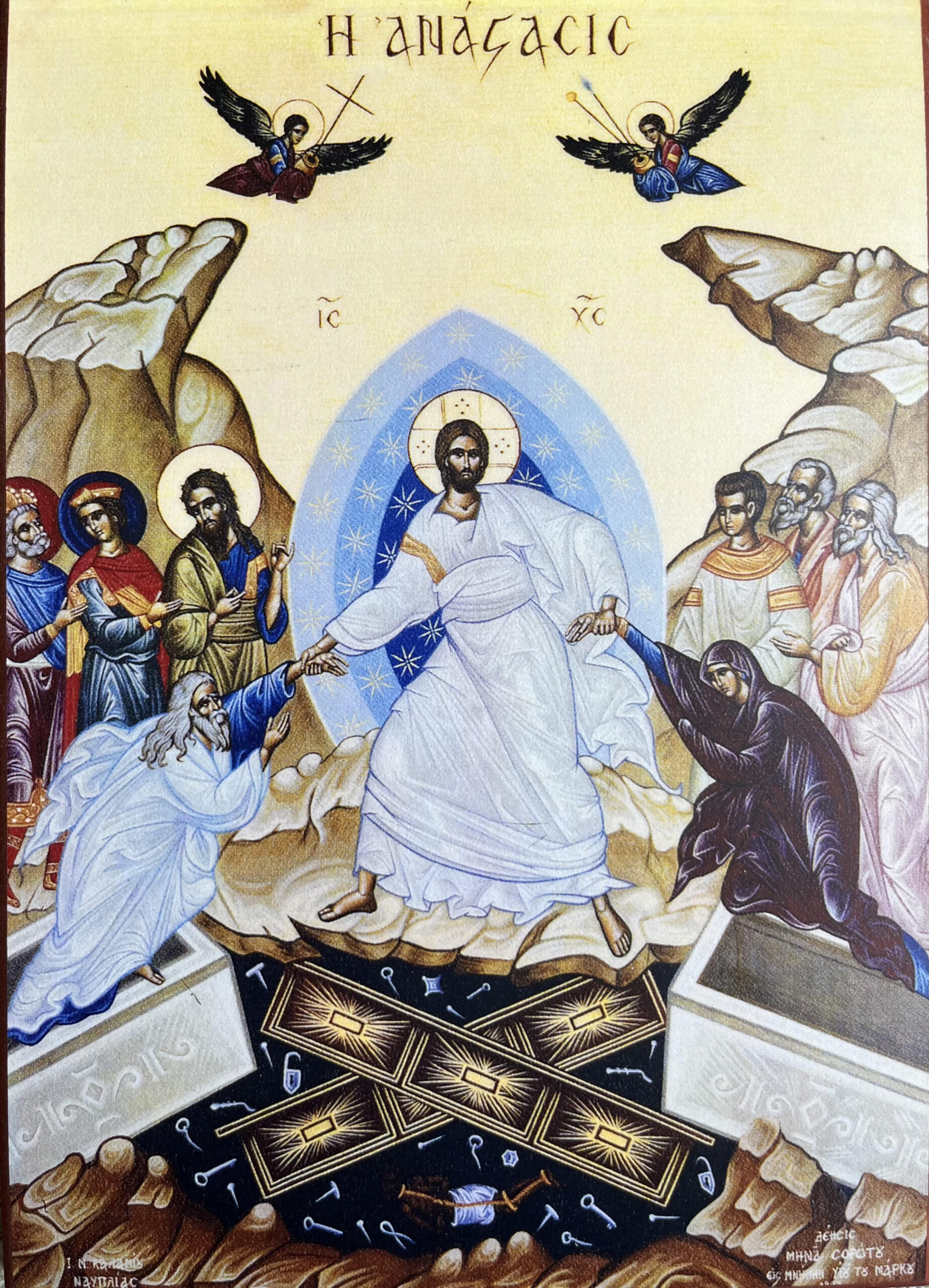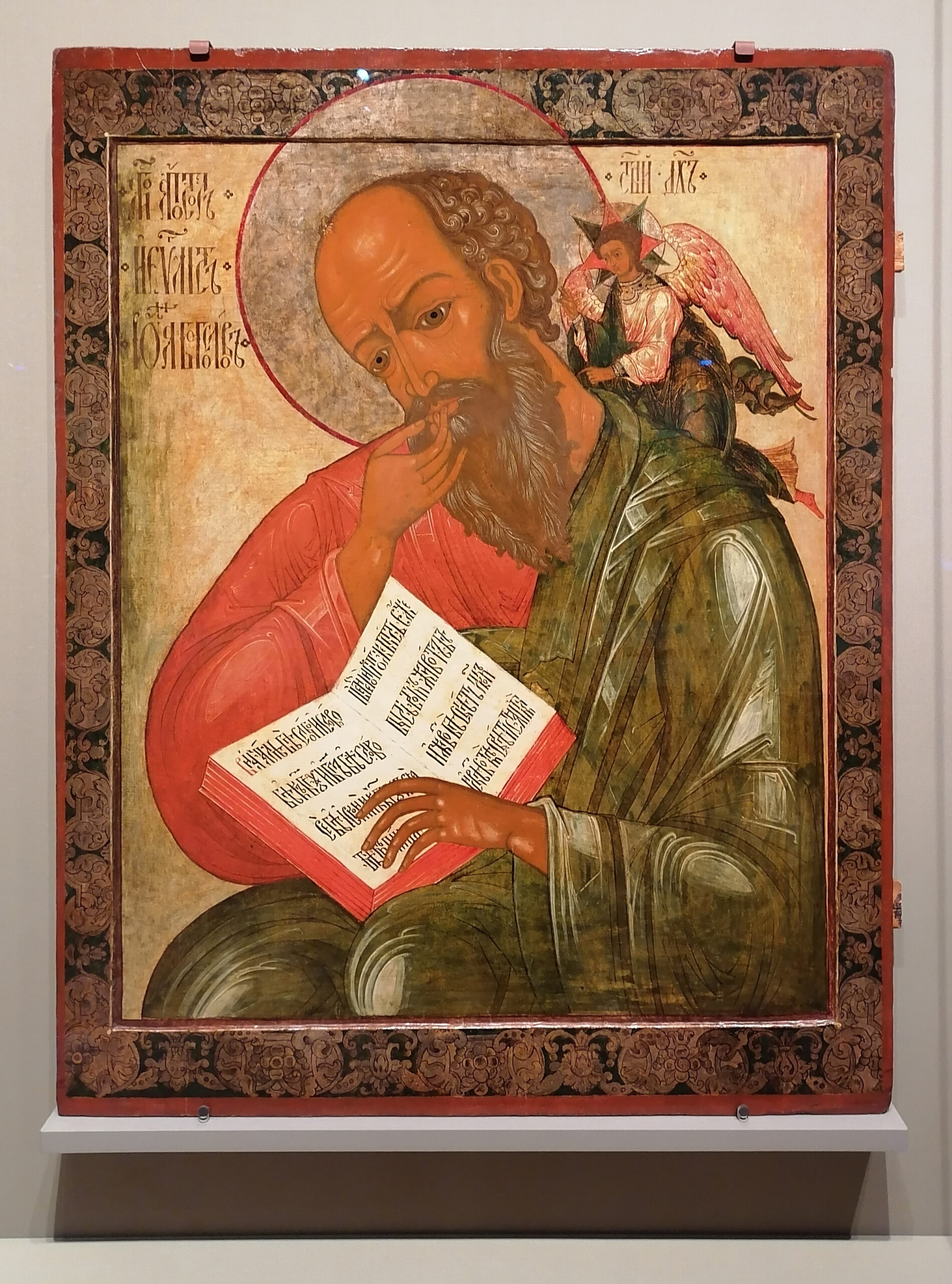To confirm the general resurrection before Your Passion, You resurrected Lazarus from the dead, O Christ our God. Therefore, imitating the children, carrying the symbols of victory, we cry out to You the Victor over death: “Hosanna in the highest! Blessed are You, the One, who comes in the name of the Lord.”
~Apolytikion, Saturday of Lazarus/Palm Sunday, Trans. by Fr. Seraphim Dedes
—
When the great crowd of the Jews learned that He was there, they came, not only on account of Jesus but also to see Lazarus, whom He had raised from the dead. So the chief priests planned to put Lazarus also to death, because on account of him many of the Jews were going away and believing in Jesus. The next day a great crowd who had come to the feast heard that Jesus was coming to Jerusalem. So they took branches of palm trees and went out to meet Him, crying, “Hosanna! Blessed is He who comes in the name of the Lord, even the King of Israel!” And Jesus found a young ass and sat upon it; as it is written, “Fear not, daughter of Zion; behold, your king is coming, sitting on an ass’s colt!” His disciples did not understand this at first; but when Jesus was glorified, then they remembered that this had been written of Him and had been done to Him. The crowd that had been with Him when He called Lazarus out of the tomb and raised him from the dead bore witness. The reason why the crowd went to meet Him was that they heard He had done this sign.
John 12: 9-18
In this reflection, we come to the first well-known hymn of Holy Week, “Tin Kinin Anastasin,” “To Confirm the General Resurrection.” This hymn combines the events of the Saturday of Lazarus with Palm Sunday. Indeed, Christ had raised Lazarus from the dead, and on the next day, He came to Jerusalem, where He entered the city on a donkey. The people, especially the children, were carrying palm branches and laurel leaves, which were the ancient symbols of victory in athletic contests. They waved them at Jesus, symbolically, for He who had shown Himself to be the victor of over death in the raising of Lazarus, and also because they believed He was a kind of king who might bring victory over the Romans who oppressed them.
The role of the crowd is very interesting. John 12:18, which is the last verse of the Gospel passage read at the Divine Liturgy on Palm Sunday, emphasizes that “the reason why the crowd went to meet Him (the same crowd that had been with Him when He raised Lazarus from the dead) was that they had heard He had done this sign.” Did the crowd come more from curiosity or adulation? Were they amazed Jesus had raised Lazarus? Or were they more curious what He would do next? The same crowd five days later would chant “Crucify Him! Crucify Him!” Did they demand this with conviction, or had they been swayed by a few instigators who incited the crowd to demand execution? There are many figures whose specific names we remember from the Holy Week narrative. We don’t know the names of those in the crowd, but most certainly the crowd played a role.
The crowds in our churches on Palm Sunday are similar to the crowds in Jerusalem that Sunday two thousand years ago. They come with joy, but some lack conviction, because they don’t come back!
There are certainly different lessons we can take away from Palm Sunday. One of them is about the humility of Jesus, which we will discuss in the next reflection. As for this reflection, let’s continue to discuss the devotion of the crowd.
There will be a time in every genuine Christian life when one will have to stand against the crowd which opposes Jesus. That crowd might be peers in college, or co-workers, even close friends and sometimes even family, who egg us on to engage in non-Christian behavior. The “crowd” will be very convinced either that they are right, or that they are wrong but it’s no big deal. And we will be presented with a choice to either go along with the crowd, or stand against the crowd and perhaps deal with reprisals because of our choice.
The people in the crowd on Good Friday were understandably scared that to stand up for Jesus meant that they might die with Him. None were ready to make that decision, save for the Apostle John and the Virgin Mary, the only two who stood at the foot of the cross. The centurion, the myrrh-bearing women, Nicodemus and Joseph of Arimathea, would eventually risk their lives after Christ died.
One of the beautiful things about Holy Week is that “it puts us there.” It puts us in the scenes of Christ’s passion week both in remembrance (walking the steps He took two thousand years ago) as well as metaphorically (thinking of these steps in a contemporary context). Many churches hold processions where the children hold palm branches and wave them as the priest, representing Christ, walks by. The adults in the crowds see the children (and probably take many photos of them) and hopefully remember the children of Jerusalem on that Palm Sunday. In this way we re-enact the Entry of Christ into Jerusalem.
In contemporary context, we “see Jesus passing by” often in our lives. The reaction in many corners of the crowd is silence or indifference. We are too busy to notice Christ. In other corners of the crowd, the reaction is negative, it is angry. Christ is no longer seen as the Savior but as the problem in the world. The rhetorical questions to ask ourselves on Palm Sunday, as we see the pageantry in our over-filled churches are these:
1. Do we stand “in the crowd” with conviction, or with impassivity?
2. Do we stand in the crowd with knowledge of what we are doing, or ignorance?
3. Do we stand in the crowd because of guilt, curiosity or joy?
4. Do we shout “Hosanna” and praise God, or do we stand stoic and silent?
5. And when the crowd in the world turns on Jesus, as it did two thousand years ago, will we stand up for God, will we stand against Him, or will we stand indifferent to Him?
Palm Sunday morning is one of my favorite services. After all, who doesn’t like to see the church full? The focus of the day seems to go first to the crowd, which is why we’ve discussed them first. Now we will reflect on the humility of the Lord who entered into Jerusalem on Palm Sunday.
Christ, You mystically shed tears because of Lazarus Your friend, dead and buried in a tomb, and You raised him from the dead, in Your love for humanity displaying compassion. O Savior, when they learned of Your arrival there, the multitude of babes came out to greet you today; and in their hands they were holding palm leaves, and they were shouting “Hosanna” to You and saying “Blessed are You O Savior, for You have come to save the world. (Kathisma, Orthros, Palm Sunday, Trans by Fr. Seraphim Dedes)
Consider your position in the “Palm Sunday crowd”, both then, and now!

